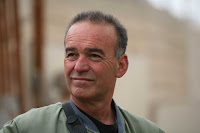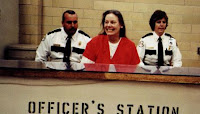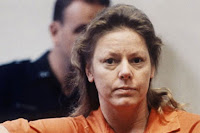Today we looked at the footage from the interview workshop on Wednesday getting feedback on the sound, white balance, exposure, focus and framing. We then looked at a clip where freelance producer/director Jonothan McLeod was talking about how to get clear sound when self-shooting. http://www.bbc.co.uk/academy/production/television/self-shooting/article/art20130702112135342
Scripting and storytelling
- All programming is to a lesser or greater extent scripted.
- Factual programmes face particular ethical challenges when it comes to how far they should be scripted and the ethical questions relating to the constructed nature of the genre.
Title
The title is important as it:

- Sells your film to its audience - 'tease'
- Encapsulates what your film is about
- Focuses you as a producer/director on the real meaning of your film
- Adds meaning to your film - 'double entendre' common e.g One Born Every Minute - new conventions re: blunt literal titles e.g The Boy Whose Skill Fell Off.
The treatment
The treatment should outline how you want to tell the story:
- Main characters/interviewees
- Locations
- Style/format
- Narrative structure
- Whether using a presenter/reporter
The treatment should also include:
- Transmission ("TX") time and channel/platform
- Target audience
- Whether it's a stand-alone film, part of an existing strand or series, or is split into parts to form a new series
 Documentary scripting can utilise:
Documentary scripting can utilise:
- Sequences
- Interviews

- Reconstructions and dramatisations
- Actuality
- Cutaways/GVs
- Sync
- Commentary
- Music
- Archive/stills
- Graphics
Documentary should be as much about the pictures as any other film. Show and tell, don't just tell.
Shooting Scripts
- Written prior to filming
- Forms the template of the finished film
- Should be informed by your research and allow you to effectively think through your film's picture and sound content and a basic structure
Script example:
Starting
- Always start by writing your commentary and interview with a summary of each person's sync e.g Fred describes his life in London (research informs your comm).
- Explore picture opportunities through your script.
- Always write to pictures - they should work together - synergy of woods and pictures.
Scripting conventions
e.g write COMM or V/O for commentary
- SEQ = sequence
- ACT = actuality
- C/A = cutaway
- SYNC = interview clips
- SFX = sound effects
Commentary is usually made distinct by being written in italics/in bold, also helps during voiceover record if they are numbered.
Line and a half spacing (makes it easier to read)
Developing your story - finding the narrative
- Finding a narrative for your documentary is essential.
- A central thread of some kind which will hold your story together e.g Day in the life/Jurney of exploration.
- The central thread could involve the process of investigating the answer to a particular question or theory.
- The film's narrative is influenced by the characters, location, period of time it's covering and the events presented.
- Time-based narratives can't be fractured. Ensure you check the logic of your story and keep to it.
Narrative- light, shade and tension

- Consider how you will inject light and shade. It's important to consider the overall experience of watching your film.
- Tension is a key element pf storytelling, adding suspense and drama. These should be identifies during the research process if possible.
Ways to create tension:

- Scripting (voiceover), emphasise dramatic moments and tease.
- Bringing together opposing groups/individuals within the film.
- Real events - e.g on a raid with the police in
Police, Camera, Action.
Commentary in documentary
- Guide/explain the story
- Information/expertise
- Intro of character
- Tension
- Corner turn
We were shown a clip from ITV's 'Police, Camera, Action', showing the police is fighting drug use in the UK. The whole clip is shot handheld, with cameras attached to the police's bodies.
While watching we were asked to focus on the commentary in the clip and the actuality.
Narrative styles

- There are a number of narrative styles which can be used in documentary filmmaking.
- The documentary filmmaker might become the film's protagonist or investigator e.g Michael Moore or Nick Broomfield films.
- The method of storytelling is determined by what is appropriate for the content, the programme/series/channel identity and by the preference of the film's producer/director.
Narrative devices - Actuality driven narrative vs sequenced Narratives
Actuality driven:
- This is a term used to describe more observational type films whose structure and storytelling develops around what happens, the developing of events drives the story and provides the narrative e.g 'One Born Every Minute'/'Cops with Cameras'.
Sequenced documentary films
- Have a more "polished" feel and are typically more formatted pieces e.g who do you think you are? (Although this also is driven by the "actuality" of journey of discovery).
The choice as to whether or not the film is entirely actuality driven, partially actuality driven or completely scripted depends on the subject, type of programme/series and audience.
The filmmaker will also potentially have their own views on this based on preference/style/"morals".
Subject driven and character driven films explained
- When choosing your subject you might find it seems a little "dry".
- If the subject takes over and drives the entire film the end result can feel a little "didactic" i.e like a lecture or visual essay.
- Character driven films use characters to tell a story. They are able to encapsulate the essential elements of your subject without resulting to purely didactic methods.
- Many of the best films can combine the best elements of both with the subject and argument at the heart of the film, but with the benefit of characters to breathe life, soul and even drama into your film.
Script and shot lists
- Your script can inform the shot list of the sequences, interviews, actuality and GV's etc you use for each day's filming.
- As with any film, events may need to be shot out of sequence with your script and crafted later in the edit.
Edit prep
Effective preparations for the edit are:
- Viewing and accurately naming all rushes in relevant bins - shot type, sequences, actuality, interviews, cutaways, establishing shots, opening/closing sequences etc.
- Transcripts, fully typed and time coded transcripts of interviews are invaluable. They speed up the process of preparing for your edit, as you can pre-select the clips ("sync") you want and cut and paste it into your edit script.
- Type relevant time codes onto your edit script so that you can quickly locate shots.
- Organise the material into bins to make the process more efficient.
Final script
- The script will continue to develop along with your film, it would therefore be smart to save each version of the script as a new file number e.g V1, V2, V3 and so on until the final script and add the date.
It's important to keep your script in sync with updates through the edit because:
- Efficiency, you can continue to prep on paper outside the edit.
- Should something go wrong with the edit you have a fully typed up record of it so your film could be re-cut.
- It can be used for prep and during the edit by the voice over artist.
Copyright
- Copyright applies to all artistic works which have been created and preserved in some lasting way. E.g written work, film, video, photographs, theatrical works, music, paintings, sculptures, images and so on.
- It exists to protect the creator's ownership and right to exploit future uses and re-uses of their works for copying, publishing and selling them on etc.
- When works are registered officially for copyright they are then able to be defended legally for damages, loss of profit and any related legal fees.
- Intellectual property (IP) operates within the legal framework of individual countries.
Structured Reality: A script too far?
- Structured or scripted reality is a hybrid form of factual programming which relates to an increasingly popular form of the medium which utilises 'real people' and 'real places' but which weaves plot lines which are 'prompted' by the programme's producers for the characters around 'real events'.
- Storylines are then recorded with the sort of glossy production values usually reserved for Soap operas.
- Successful programmes in this genre include 'The Only Way is Essex" and "Made in Chelsea".
- There has been some debate over whether these programmes rightly belong within the documentary genre or if they are somehow a pollution of the form taking the scripted and constructed nature of documentary way beyond what's acceptable.
- It prompted a BAFTA debate on the subject "Is Structured Reality corrupting Documentary?".
//Images\\
































